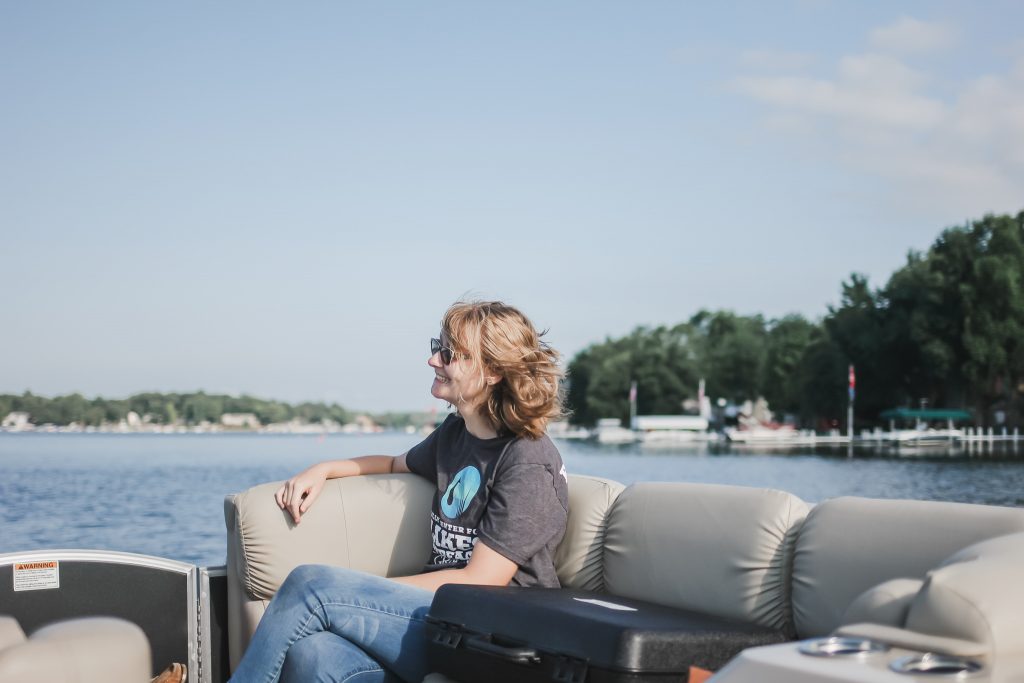A field guide to freshwater lakes
By Jed Harvey and Abby Phinney, Lilly Center Staff | Part 1 | Part 2 | Part 3
Did you know that humans are about 60% water? Jellyfish are even more water-reliant at 95%. Worldwide, about 70% of the earth’s surface is covered in water. Of that 70%, 97% is saltwater. Kosciusko County contributes to the small but impactful final 3%: freshwater lakes.
Water is the molecule that many people would claim is the most important molecule in the world. All life is based on and influenced by water! This universal solvent can dissolve most things to some degree, given enough time. Water causes weather, water shapes rocks and carves the world, water brings life to the deserts and nutrients to the floodplains. In some places, life has to adapt to find water, and in other places to get rid of too much water, but in all cases it needs water. A cell without water is a dead cell, and an organism without water is a dead organism.
That 3% (of which the waterways in Kosciusko County share a small part) is among the most crucial and fascinating percentages on earth. There may not be any deep sea vents or tropical kelp forests here, but Kosciusko has its own diversity of aquatic environments. With more than 100 lakes and 600 miles of streams, not to mention wetland environments, we are surrounded by life on every scale.

What freshwater lakes add to the economy & environment
In our county alone, the lakes contribute more than 300 million to the economy every year. The lakes’ beauty and simplicity draw people to the water for weekends and months and years. Homes are built and memories are made; art is inspired, athletes are trained, innovators are invested. Life happens here.
The lakes add value to the environment in a different but harmonious way. The water we rely on is teaming with life! The fish that call our lakes and streams home never swim alone. Each body of water is a small ecosystem, a community, and every member has its role to play. At the base of the system are the producers, like algae or photosynthetic bacteria or plants. Above that, consumers (including small fish) eat the algae, bacteria and plants, turning them into proteins and energy that the next level of the food chain (like larger fish) eats. When a consumer dies or disposes of unused waste, the group of aquatic janitors called decomposers turn the waste into nutrients that the producers can use, fueling the system to keep going ad infinitum.

De-mystifying the microscopic
With all this life happening just beyond our line of vision, it’s easy to forget (or to simply take for granted) the incredible natural resource that keeps our economy and environment afloat. Did you know that when you enjoy an afternoon on the water, you are swimming or boating alongside microscopic creatures? The little guys that make up the lower levels of the food chain don’t get much attention, even though they’re as important as things we can see without a microscope.
Get ready to be inspired by the life that thrives in our freshwater lakes and streams! This series of posts will help you peer into the small-scale, past what you can see with your naked eye. You’ll never look at a lake the same way again.
Want to learn more about water, like, immediately? Visit these sources: